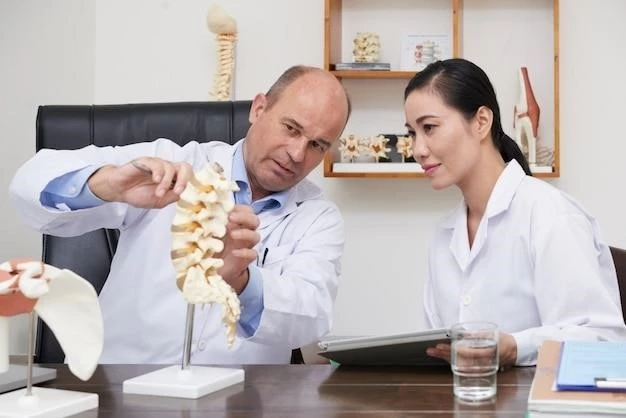Understanding Ankylosis in Joints
Causes of Ankylosis in Joints
Ankylosis in joints can be caused by conditions like rheumatoid arthritis‚ osteoarthritis‚ injuries‚ infections‚ or autoimmune diseases․ Inflammation plays a critical role in the development of ankylosis by promoting the formation of excessive bone growth that fuses joints together․ Genetic factors may also contribute to the susceptibility to ankylosis; Understanding the underlying cause is crucial for effective management and treatment of this condition․
Symptoms of Ankylosis in the Spine
Ankylosis in the spine can lead to stiffness‚ limited range of motion‚ pain‚ and difficulty bending․ Individuals may experience gradual onset or sudden worsening of symptoms․ As ankylosis progresses‚ it can result in deformities and postural changes․ Severe cases may lead to complications in breathing and affect overall quality of life․ Early recognition of these symptoms is essential for prompt intervention and management to prevent further deterioration․
Treatment Options for Ankylosis
Treatment for ankylosis aims to manage symptoms‚ prevent further joint fusion‚ and improve functionality․ Options include physical therapy‚ medications to reduce inflammation and pain‚ surgical interventions to release fused joints‚ joint replacement surgeries‚ and lifestyle modifications․ In some cases‚ supportive devices like orthotics or mobility aids may be recommended to enhance mobility and independence․ A multidisciplinary approach involving healthcare professionals can provide comprehensive care tailored to individual needs․
Ankylosis vs Arthritis⁚ Key Differences
While ankylosis and arthritis both involve joint-related issues‚ they differ in their nature and impact․ Arthritis refers to joint inflammation‚ causing pain and stiffness․ Ankylosis‚ on the other hand‚ is the fusion of bones within a joint‚ leading to immobility and loss of function․ Arthritis can be a contributing factor to ankylosis‚ but ankylosis represents a more severe and irreversible form of joint damage; Understanding these differences is essential for accurate diagnosis and treatment planning․
Preventing Ankylosis Progression
Preventing the progression of ankylosis involves early diagnosis‚ prompt treatment of underlying conditions‚ regular exercise to maintain joint flexibility‚ adopting healthy lifestyle habits‚ and following a treatment plan prescribed by healthcare providers․ It’s crucial to manage inflammation‚ protect the joints‚ avoid activities that put excessive strain on joints‚ and monitor for any signs of worsening symptoms․ By taking proactive steps and adhering to medical recommendations‚ individuals can slow down or prevent the advancement of ankylosis․

Ankylosis⁚ Risk Factors to Consider
Several risk factors contribute to the development of ankylosis‚ including genetic predisposition‚ autoimmune diseases like ankylosing spondylitis‚ previous joint injuries or surgeries‚ chronic inflammation‚ poor posture‚ and prolonged immobility․ Age‚ gender‚ and family history may also influence the likelihood of developing ankylosis; Understanding these risk factors can help individuals and healthcare providers identify early warning signs‚ implement preventive measures‚ and tailor treatment strategies to mitigate the progression of ankylosis․
Ankylosis in Children⁚ What You Need to Know
Ankylosis in children is rare but can have significant implications on growth and development․ Causes may include juvenile idiopathic arthritis‚ genetic conditions‚ or infections․ Early detection‚ proper diagnosis‚ and timely intervention are crucial to prevent long-term complications․ Treatment options may involve a multidisciplinary approach‚ including pediatric rheumatologists‚ physical therapists‚ and orthopedic specialists․ Parents and caregivers play a vital role in supporting children with ankylosis‚ ensuring access to appropriate medical care‚ education‚ and emotional support․
Living with Ankylosis⁚ Coping Strategies
Living with ankylosis can be challenging‚ but adopting coping strategies can greatly improve quality of life․ Strategies include maintaining a positive outlook‚ seeking support from healthcare professionals and support groups‚ practicing relaxation techniques to manage stress‚ setting realistic goals‚ and adapting living and workspaces to accommodate mobility limitations․ Engaging in low-impact exercises‚ maintaining a healthy diet‚ and prioritizing self-care are essential for overall well-being․ By proactively managing physical and emotional aspects‚ individuals can lead fulfilling lives despite the challenges posed by ankylosis․
